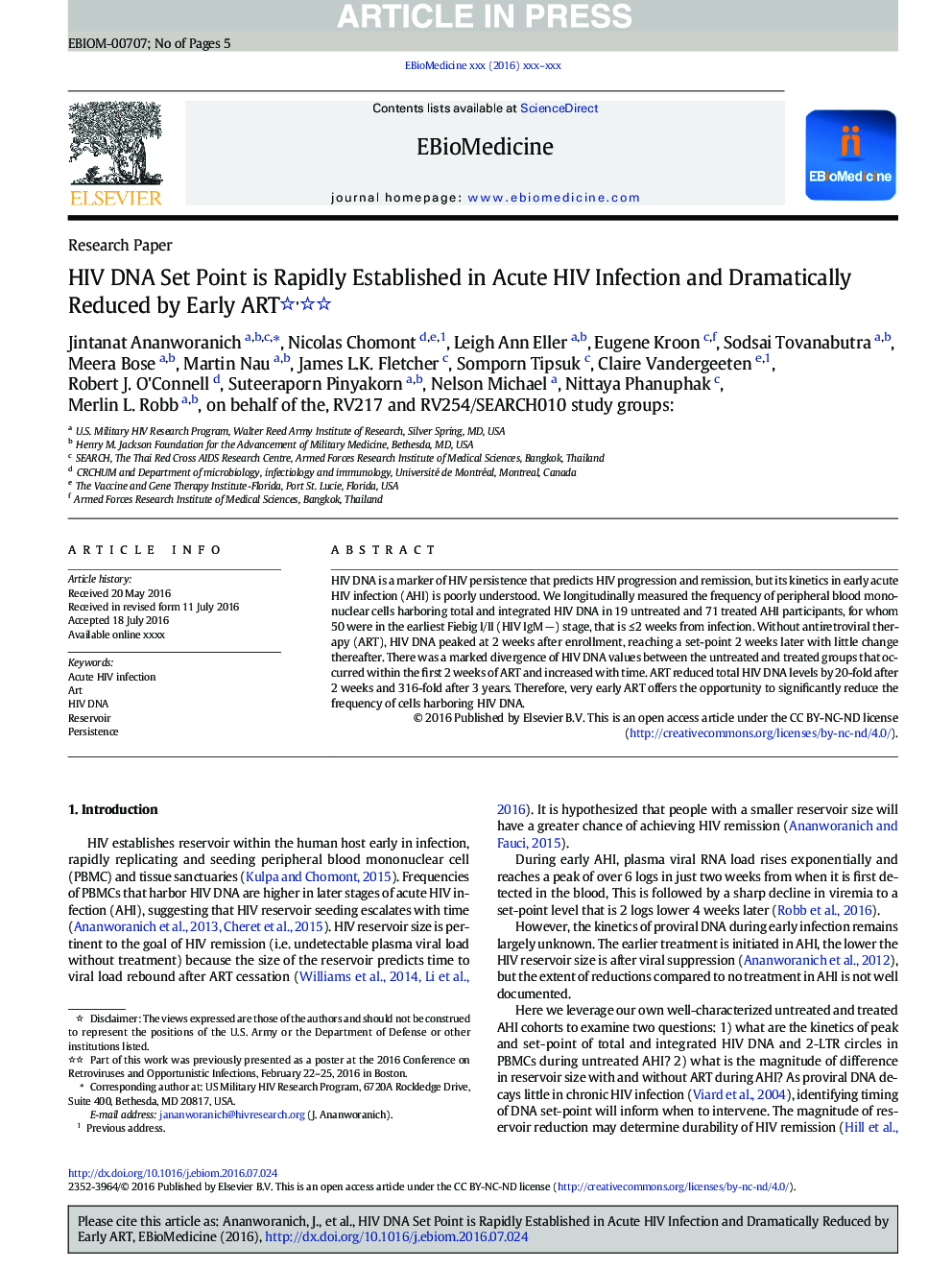| Article ID | Journal | Published Year | Pages | File Type |
|---|---|---|---|---|
| 8439126 | EBioMedicine | 2016 | 5 Pages |
Abstract
HIV DNA is a marker of HIV persistence that predicts HIV progression and remission, but its kinetics in early acute HIV infection (AHI) is poorly understood. We longitudinally measured the frequency of peripheral blood mononuclear cells harboring total and integrated HIV DNA in 19 untreated and 71 treated AHI participants, for whom 50 were in the earliest Fiebig I/II (HIV IgM â) stage, that is â¤Â 2 weeks from infection. Without antiretroviral therapy (ART), HIV DNA peaked at 2 weeks after enrollment, reaching a set-point 2 weeks later with little change thereafter. There was a marked divergence of HIV DNA values between the untreated and treated groups that occurred within the first 2 weeks of ART and increased with time. ART reduced total HIV DNA levels by 20-fold after 2 weeks and 316-fold after 3 years. Therefore, very early ART offers the opportunity to significantly reduce the frequency of cells harboring HIV DNA.
Related Topics
Life Sciences
Biochemistry, Genetics and Molecular Biology
Cancer Research
Authors
Jintanat Ananworanich, Nicolas Chomont, Leigh Ann Eller, Eugene Kroon, Sodsai Tovanabutra, Meera Bose, Martin Nau, James L.K. Fletcher, Somporn Tipsuk, Claire Vandergeeten, Robert J. O'Connell, Suteeraporn Pinyakorn, Nelson Michael, Nittaya Phanuphak,
